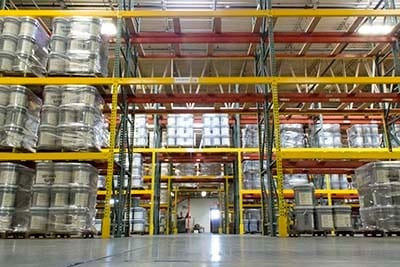5 Considerations for Choosing a Coating Finish
Many manufacturers do not realize that there is a better fit coating on the market to increase the quality of their products than the standardized coating they are currently using. Better yet, some manufacturers are not choosing the correct coating finish. Here are five considerations to keep in mind while choosing a custom coating finish for your project:
1. Substrate
One of the first items to determine revolves around a simple question: What material are you applying the paint to? Manufacturers should think about the substrate of their product materials and everything that comes along with it. You probably already know if you need acrylic, epoxy, Urethane, etc., but consider thinking through questions like:
- Will surface change from time to time?
- Are there multiple surfaces that will need to be considered?
These types of questions help to drive the decision of what type of coating needs to be specified from the start of a project. One of the greatest revenue losses for manufacturers involves the rework and scrap from matching the incorrect coating finish with a given substrate. This type of problem could always be avoided from the beginning.
2. Temperature
It’s important to think about what temperature the coating will be applied, and furthermore, the temperature of the surface. Then, think about the lifetime of the product. What are the service parameters that the coated product will see after it leaves your facility? Are you manufacturing snowboards for the snowy slopes or beach umbrellas for hot temperatures? Consider the temperature that the material will be subjected to during the life of the part that is being coated.
3. Drying Conditions
A common mistake manufacturers make is when the coating seems dried and they package the products for shipping, but film cure is not thorough. In this case, durability suffers and the paint peels away, fails by erosion or exhibits another form of coating or product disappointment. Asking questions about temperature up front helps match up the proper coating with the drying conditions and overall climate conditions.
- What are the drying conditions of the paint after application?
- Will the coating be force dried?
- Will the coating be cured under ambient conditions?
- Will heat be applied during the drying process?
Determine the drying conditions during the beginning stages of your project. When manufacturers package products that are not truly cured, parts will stick together in package, strip coating, and create waste or rework.
4. Performance
Think about the performance requirements of the paint and make sure specifications made to the coating are all a necessity; this is similar to paying for an option that you may not need, or want.
The performance characteristics can be anything from:
- Smoothness of film
- Gloss
- Color quality
- Adhesion
- Abrasion or Mar resistance
- Corrosion resistance
- Color retention
- Many others
Talk to your coating supplier about what performance qualifications the material must have. You should not be paying for an over engineered product that does not provide any benefit to the formulation. But you also should avoid using an under engineered product that does not allow your product lines to reach their full potential in terms of quality and performance, creating a higher complaint rate from the end users.

5. Economics
Price is always an object. However, we look to create coating finishes of quality and spec. Try selecting paints that meet your need to keep your customers coming back for more and the end users of products happy with their purchases.
As a manufacturer, is there one point in particular that stands out to you? Share your thoughts with us in the comments.

